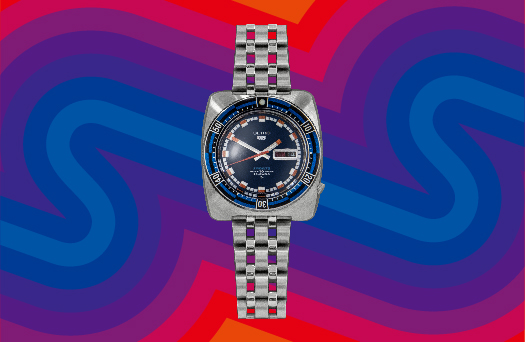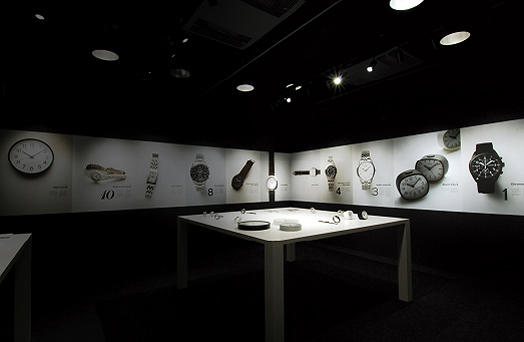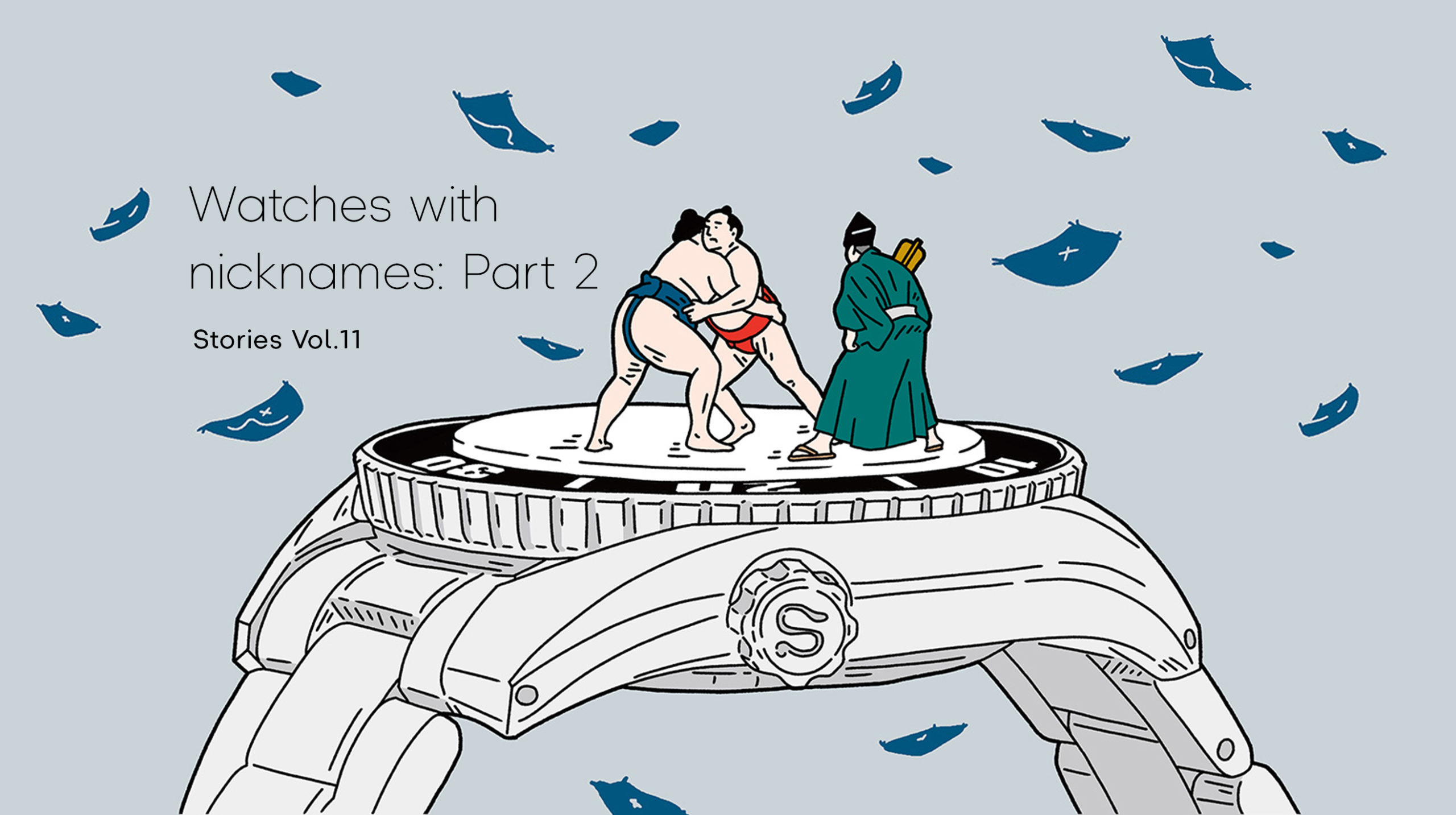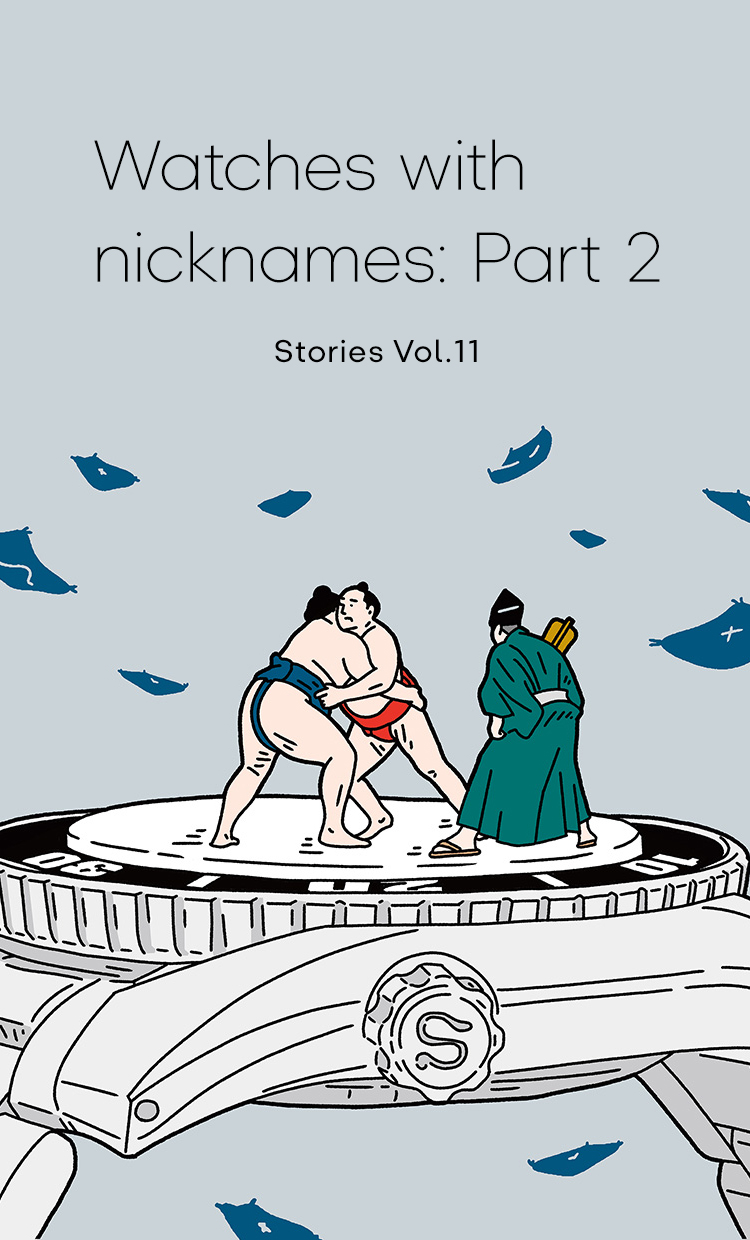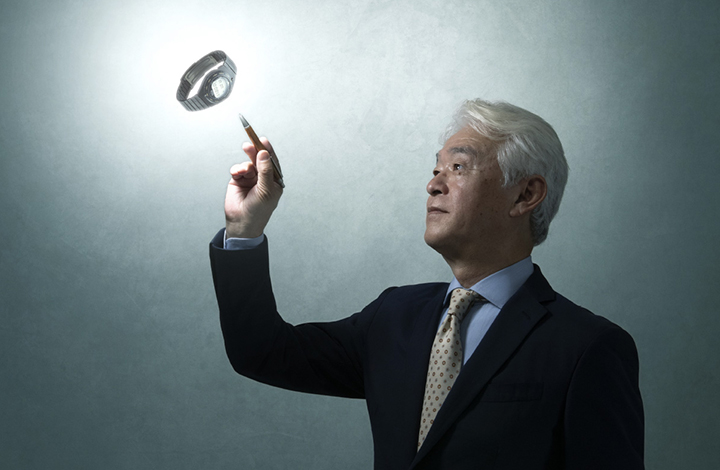The watch called the Sumo: Where does the nickname come from?
Kishino: When Monjugawa and I talked about“Watches with nicknames”last time, we introduced watches nicknamed the Tuna Can, the Monster, the Samurai, and the Turtle.
Matsue: There seem to be still more watches that have nicknames. For example, this diver’s watch launched in 2007, which is called the Sumo.
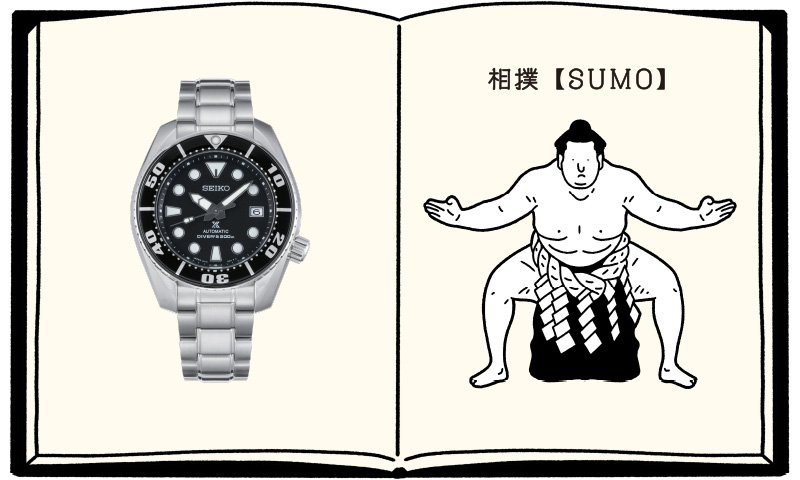

Matsue: I can see that it might conjure up the image of a professional sumo wrestler because of its overall stout aura.
Kishino: Yes. Although, really, the impression you get from the actual watch is different from the impression created by the picture taken from the front. When you hold the actual watch in your hand and look at it, it doesn’t really seem so weighty. If we were to compare it to a type of sumo wrestler, it would be like a muscular soppu type rather than a weighty anko type.
Matsue: Taking another look at it now more carefully, its shape has a certain firmness and sharpness, doesn’t it. The wide and raised rotating bezel is also distinctive.

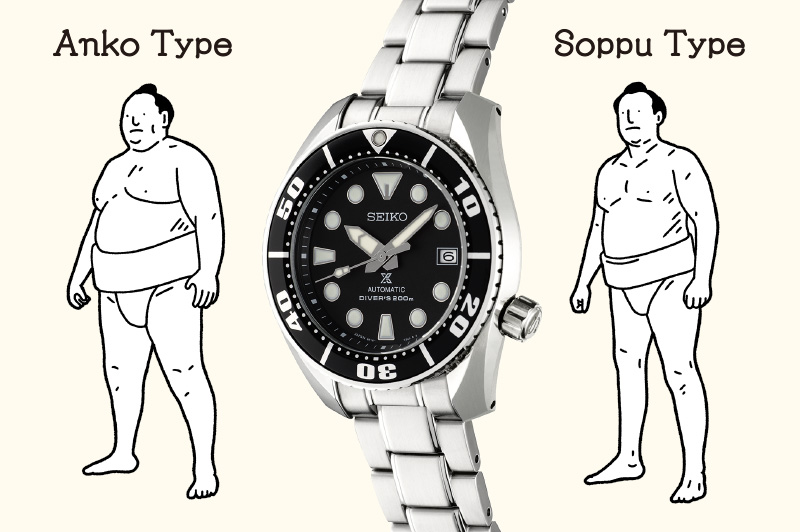
Kishino: I’m curious as to why this watch is nicknamed Sumo, which is the name of the sport. The Samurai and Shogun are the names given to a person, so it wouldn’t have been surprising if this watch had been nicknamed Rikishi or Yokozuna.
[Rikishi: a term for any sumo wrestler; yokozuna: a term for sumo wrestlers who have reached the highest rank]
Matsue: If a Japanese person had given it a nickname, it might have been a name that indicates a person. This is just my guess, but I suppose that a non-Japanese person nicknamed the Sumo. Considering that there were already other watches with Japan-related nicknames like the Samurai, I think a non-Japanese person saw the thick markers on the bezel and the chunky lug, and thinking of a Japanese word that they could associate with that image, they decided “This is just like sumo!”
Matsue: I’ve heard it suggested that the nickname Sumo may be derived from the 12 o’clock marker that looks somewhat like the oicho. If you think about it that way, it does begin to look like it. [Oicho: the topknot worn by sumo wrestlers]
Other than that, focusing on the rotating bezel, don’t you think its shape somehow creates the impression of a dohyo? [Dohyo: the ring where sumo wrestling bouts are held]


Kishino: You mean the shape of the raised rotating bezel we talked about earlier. I feel a sense of strength from the balance of forms between the sturdy rotating bezel as a foundation and the glass. An actual dohyo is created on a raised platform of clay, so I suppose you could imagine a similarity in the image of this watch. The detailed knurling on the side of the rotating bezel is not unlike the rice-straw bales that form the edge of the dohyo ring. Taking that into account, I can understand why this watch was nicknamed after the sport, sumo, rather than yokozuna or rikishi.
Matsue: The more we discuss the various elements, the more the rotating bezel looks like the dohyo to me. Although the person who designed this watch, our senior, might protest and say “It’s not a dohyo or sumo!”
But when watches or any other regularly used items are given nicknames, it makes it easier to form an attachment to them.


Kishino: When I once again look over the design of the Sumo watch, possessing an impressive strength without being too heavy, I think it is superb design. While the markers on the rotating bezel are extra thick, the reverse-tapered shape of the bezel gives the design a visual lightness. The case makes excellent use of a combination of mirror-finish inclined surfaces and hairline-finish surfaces to achieve a three-dimensional surface composition with exquisite balance. When you look at it closely, you can see that this watch has a very high-quality finish. So, I guess there is also the aspect of non-Japanese people being attracted by its design and high quality.
Matsue: I think the balance between its strength and subtlety as a watch is also important. Actually, even after more than 10 years since its launch, this Sumo watch still boasts persistent popularity.
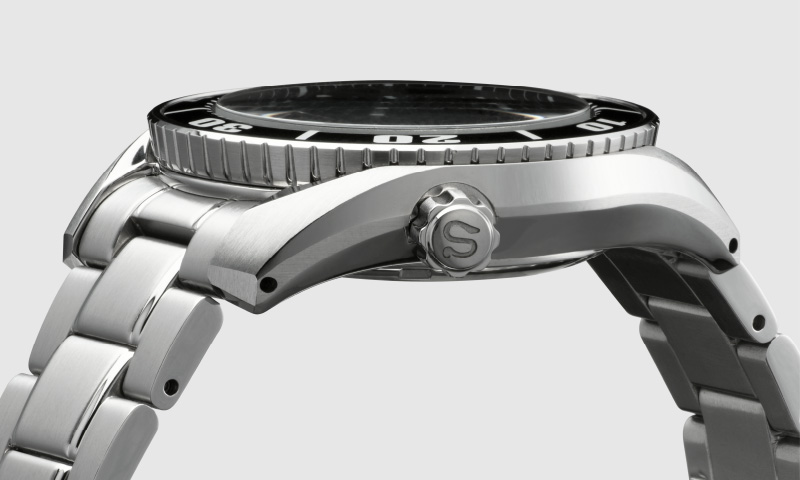
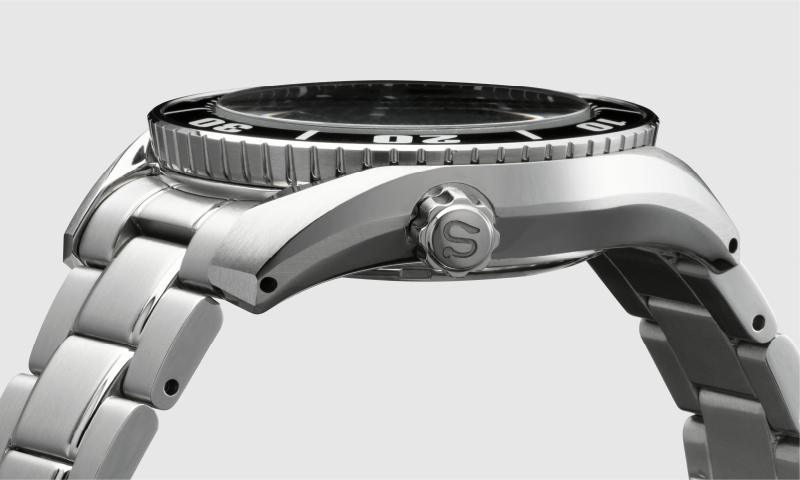
An (arbitrary) analysis of the origins of the nickname Shogun.
Kishino: This is a diver’s watch (SBDC007) launched in December 2008 that users call the Shogun. This nickname also gives an impression of Japan seen from a foreign perspective. As I look at it, I can see that this design does somehow exude the aura of a shogun.
[Shogun: the title of a military dictator in feudal Japan]
Matsue: This watch presents an image of the hardness of metal, and its design has armor-like elements such as the triangular notches made for the knurling of the rotating bezel and the pointed markers on the bezel. The name Shogun is probably derived from its appearance.
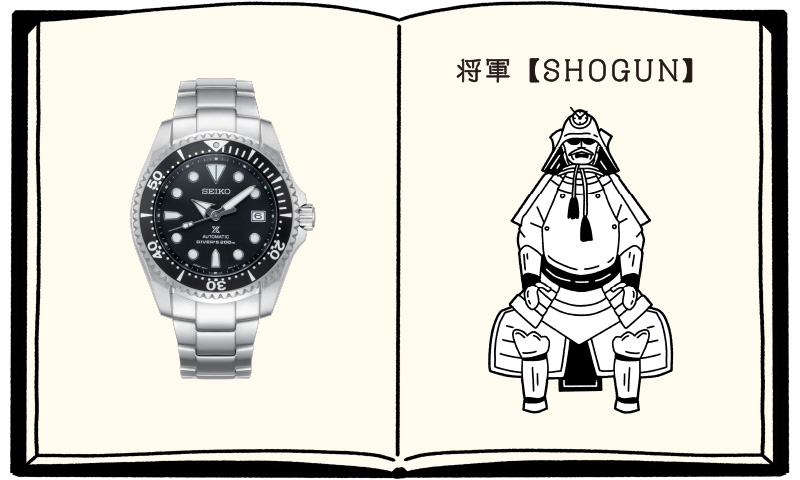
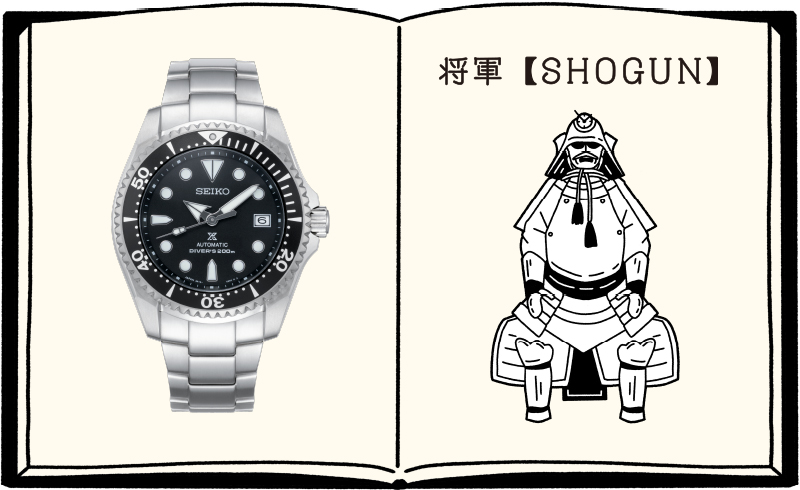
Kishino: This is just my guess, but after stretching my imagination, going on the hypothesis that non-Japanese people nicknamed our watches, I don’t think that the person who nicknamed Shogun actually held this watch in their hand. The shape of this watch certainly looks somewhat like armor and a helmet, but because the case is in fact made of titanium, when you hold the actual watch in your hand, it is really quite light.
Matsue: Compared to the impression of its appearance, it doesn’t have a weighty feel like armor. If the person had actually worn this watch, it might have been nicknamed something like Ninja or Shinobi, because of its lightness.
[Ninja, shinobi: covert mercenary agents in feudal Japan]
Kishino: It’s often the case with watches that when you actually hold them in your hand, you are surprised to discover a new appeal or previously unnoticed aspect. Because this watch has a heavy feel in appearance, with that impression of weight in mind, someone may have imagined that it looked like armor, and associated that with the image of a shogun, and thus nicknamed it the Shogun. If that is how this watch gained its nickname, it is an intriguing story.
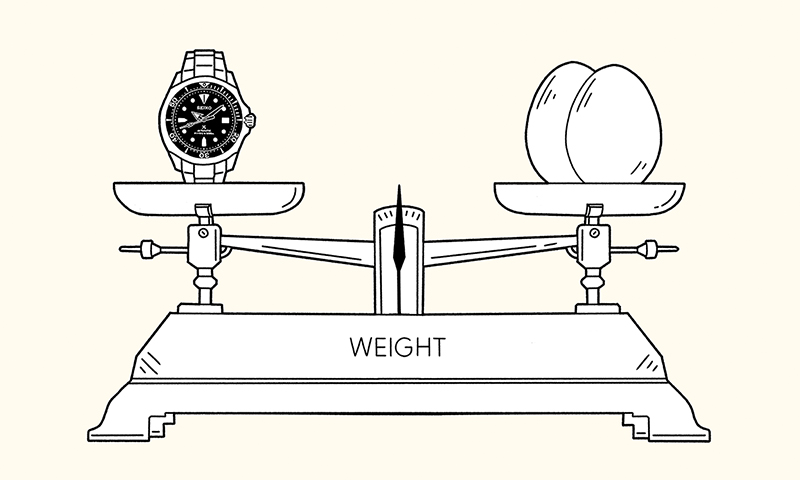

Comparing the designs of the Sumo, Shogun, and Samurai.
Kishino: When comparing the Sumo with the Shogun, they may look alike at first, but the concepts behind their shapes are slightly different. The Sumo encapsulates everything within one sweeping flow, with curving, muscular shapes. The intent of the Shogun is to present the whole structure as composition of linear surfaces that create contrast. When considering the images of sumo, a physical contact sport, and the shogun suited in his armor, in comparison to these watches, each nickname does seem to be on point, in one sense or another.

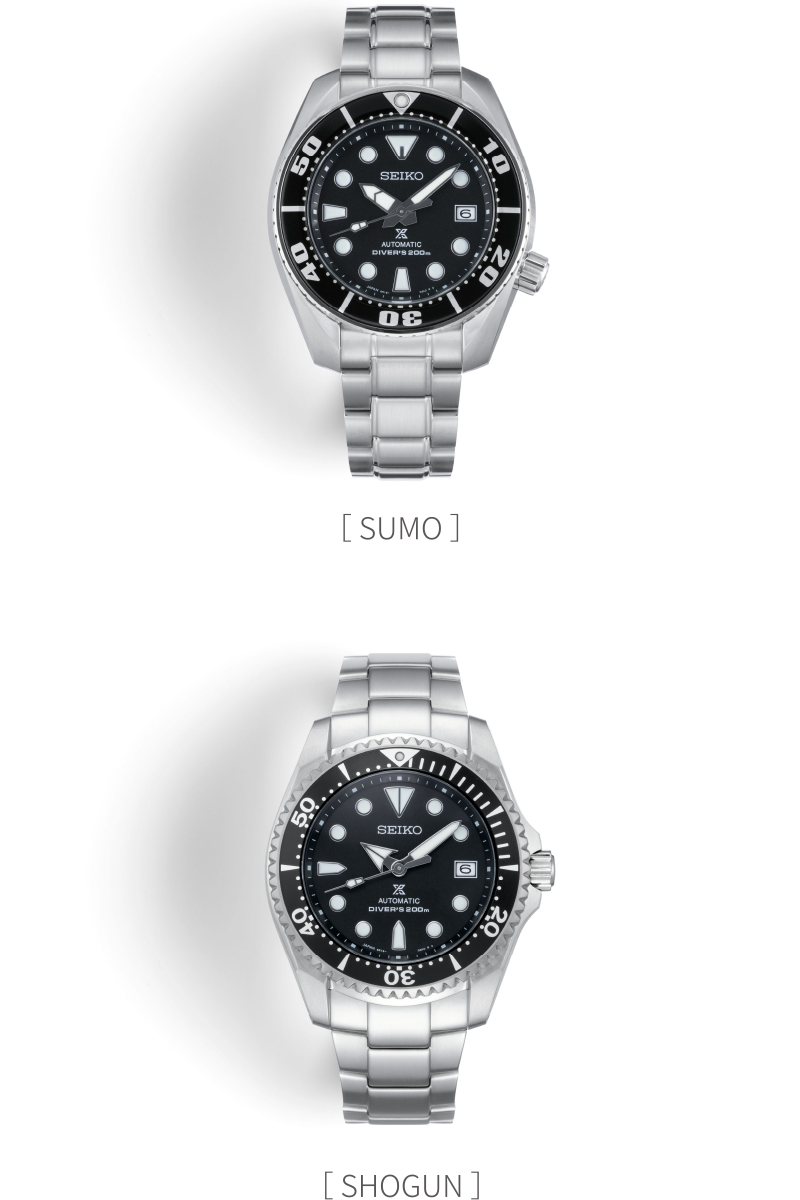
Kishino: Next, let’s compare the Samurai watch, which I examined in the previous discussion, and the Shogun watch. The cases of both watches have unique surface designs. The Samurai has a bold surface design, like it’s been slashed a couple of times with a sword and had parts sliced off, but the Shogun also has its edges chamfered to remove sharp corners, and has surfaces with a beautiful mirror finish. Aesthetically, the Shogun is more elaborate.
Matsue: That design has the effect of making the case look visually thinner than it really is. The Shogun has a more intrepid appearance as compared with the Samurai.
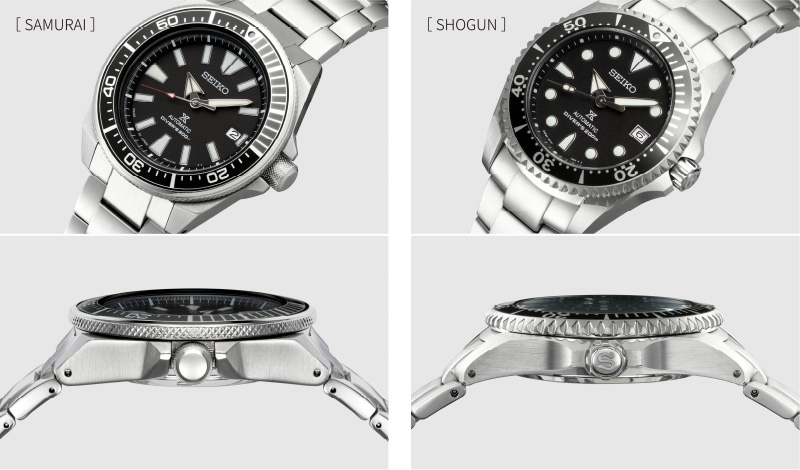
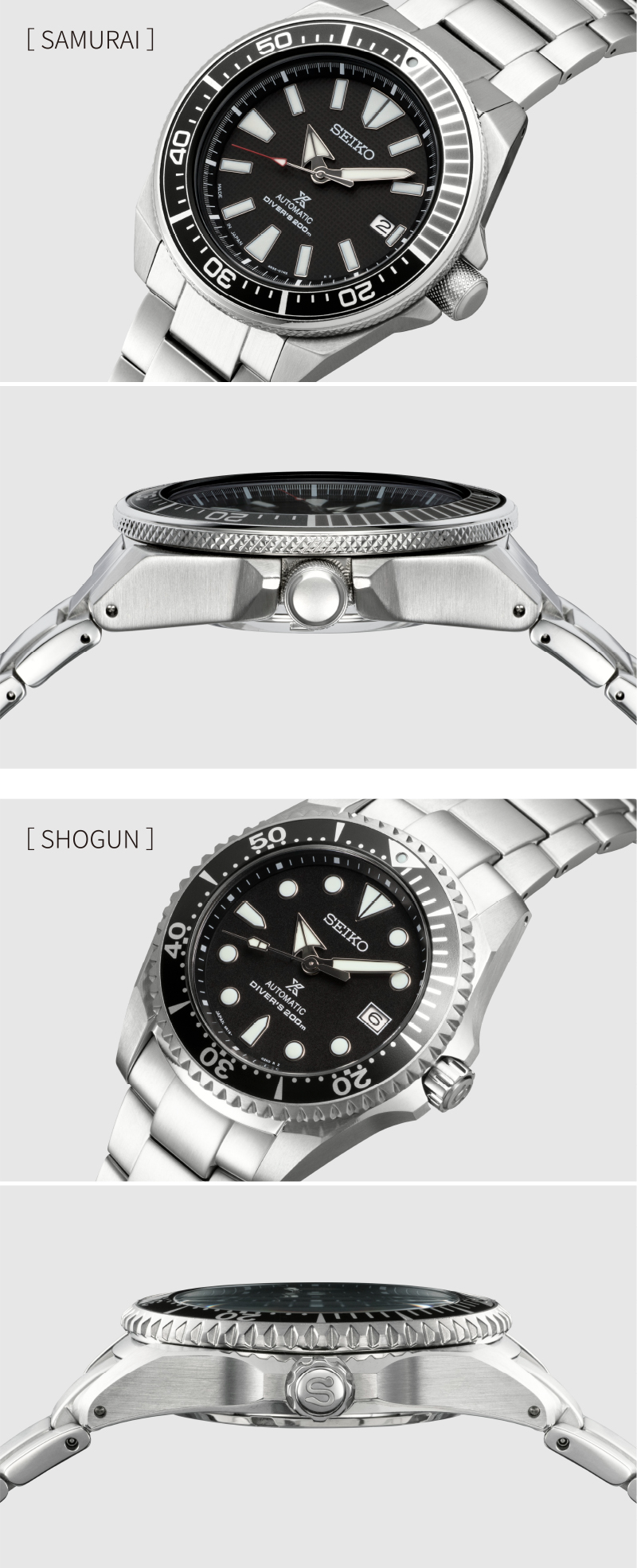
Kishino: Generally speaking, the shape of the links used for watch bracelets in most cases is based on straight lines. But in the case of the Shogun, its links are instead joined at an angle in what is called a yabane (arrow feather) shape. The way this angle is incorporated in some way brings to mind arms and armor.
Matsue: The triangular notches made for the knurling of the rotating bezel I mentioned earlier are also distinctive. The edgy shape is exaggerated in an obvious way and seems to look somewhat like the ornamentation on shogun helmets.
Kishino: You could also say they look like a myriad of scars carved into armor that has been through numerous battles.
Matsue: The Shogun watch, as befits that name, is equipped with a movement that is superior to that of the Samurai. In terms of its embellishments and precision also, it is on a higher level, so if we consider the shogun as the one that ruled over the Samurai, this nickname really does fit the watch perfectly.
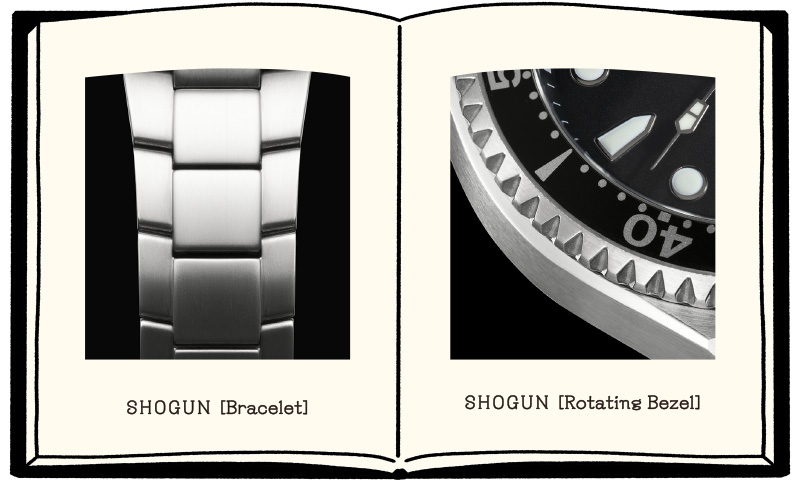

Matsue: The interesting thing about these nicknames is that before we have even become aware of them, they gain widespread recognition, more than we would expect, to the point that even those who are not fans of Seiko are aware of the nicknames given to each watch.
Kishino: I get the feeling that Seiko in particular has a lot of watches that have been given nicknames. That is because Seiko has produced and developed a wide variety of watch designs in its long-established history. Maybe we will see more watches acquiring unexpected nicknames and enjoying appreciation and long use by customers.



